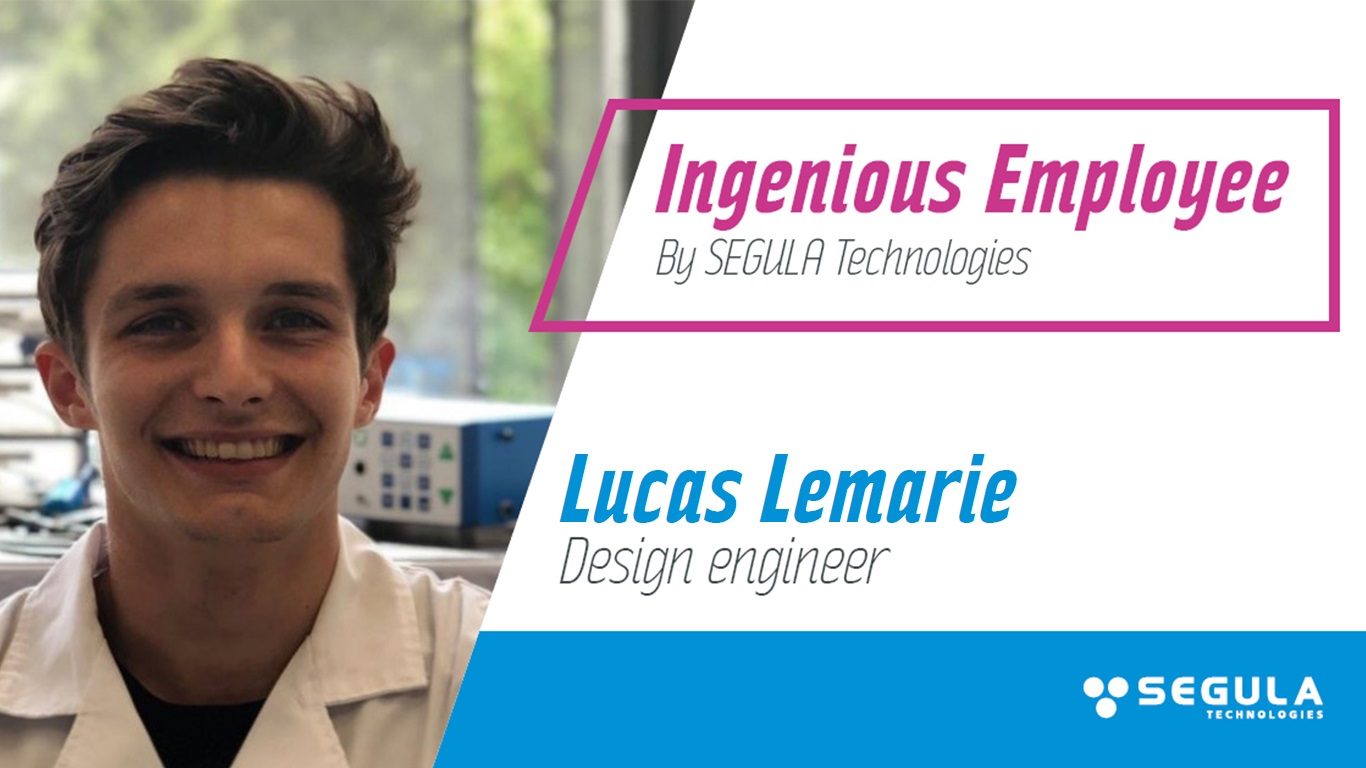What priorities must new composite materials meet?
Loïc Durual : In aeronautics, weight is enemy number one. Even though composites are already lighter than traditional metal alloys, manufacturers always want more. The goal is to make structures even lighter to improve aircraft performance and range while reducing fuel consumption and therefore greenhouse gas emissions. The environmental challenge is also key. Not all composite materials are equal in this respect. Epoxy, for example, is one of the most widely used resins in the aerospace industry. Used as a matrix in composites with carbon or glass fibres, it is lightweight, rigid, thermally stable and highly adhesive. But it is difficult to recycle. This thermosetting resin cannot be remelted once polymerised. That is why we are increasingly interested in thermoplastics such as PEEK, or polyetheretherketone.
Luc Becker : PEEK is indeed attractive to the aerospace industry because of its excellent mechanical properties, light weight and high thermal stability. This is because the thermal conditions of air travel are generally subject to significant temperature variations, ranging from over 50°C during a ground stop in summer to extremely low temperatures at a cruising altitude of 12,000 metres above sea level. And unlike epoxy, which must be glued, PEEK can also be welded for cleaner, higher-quality assemblies, with the prospect of being remelted for a second life. Once heated, this polymer can be extracted and reprocessed, paving the way for strategies for reusing and repairing parts. But this solution comes at a cost. PEEK is a very expensive material, which currently limits its use to high value-added applications.
What challenges do you face in desi- gning the composites of tomorrow?
Loïc Durual : When we talk about innovation in composite materials for aeronautics, the challenges go far beyond weight reduction or environmental impact. The choice of raw materials is a real issue. It’s not just a question of fibre or resin. First and foremost, we need to find suppliers who can offer the right fibres, whether carbon, glass or textile, with the appropriate enzyme treatment to ensure good adhesion with the resin, with the aim of manufacturing composites that are lightweight, strong and durable. Such partners are still very rare today.
The second challenge lies in the development of the products themselves. Developing a composite is extremely expensive, especially when it involves test plans as part of an iterative design process. Changing a single parameter, whether it be the manufacturing temperature, the proportion of fibres, the orientation of the layers in the material or the geometry of a part, can quickly increase the number of tests required. It is not uncommon to carry out 600 or even 1,000 tests before achieving the optimal version. However, carbon fibres can cost up to £50 per kilogram, and PEEK several hundred pounds per kilogram. In other words, each iteration must be carefully thought out in order to keep budgets within reasonable limits.
The final major challenge is assembling the parts. Three techniques (bonding, welding and mechanical
assembly) are mainly used. Each has its advantages and limitations. Adhesives, for example, can be a hindrance in certain parts of the structure and raise questions about recyclability. This must be taken into account when designing new parts. Welding is reserved for thermoplastic materials such as PEEK. It allows for single-material assemblies, which are easier to recycle and often more robust. Finally, mechanical assembly remains an option, but can make structures heavier. Ultimately, every decision, whether it concerns raw materials, development or assembly, has a direct impact on performance, cost and sustainability. It is therefore essential to have an overview of each of our developments. It is precisely this cross-disciplinary expertise that we have mastered for the aerospace sector.

Loïc Durual, Composite Team
Project Manager
What are SEGULA’s strengths in the field of composite materials for aeronautics?
Luc Becker : SEGULA stands out thanks to several key strengths. First
and foremost is our cutting-edge expertise in numerical calculations and simulations, which is a powerful lever for accelerating innovation in the selection of raw materials, mechanical testing and component assembly. Thanks to these tools, we can significantly reduce costs and iteration times for new product development, and are now able to propose new ideas and prove that a material is functional.
We know how to model the behaviour of resin and fibres, optimise part design, play with a large number of process variants and consider every conceivable test without going through the manufacturing stage, except at the end, particularly
with a view to certification. This approach enables us to drastically reduce costs, but also to validate the
reliability of new materials upstream.
This expertise is complemented by our ability to intervene throughout the value chain. SEGULA has all the skills required to support players in the aerospace industry, from formulation to industrialisation of parts,
through extrusion or additive manufacturing, including life cycle analysis. We thus provide our customers with comprehensive, tailor-made solutions adapted to each aerospace project. Whatever the requirements for material optimisation, we have the capacity to meet them and have already gained experience in this field. Another of SEGULA’s strengths is our ecosystem of scientific partners. By teaming up with research laboratories and suppliers of specific materials, we have permanent access to
the latest advances in the materials sector, while at the same time conducting collaborative projects using our own funds to explore new avenues and remain at the forefront of innovation. It is this combination of expertise in digital simulation and a comprehensive overview that enables us to take on new challenges, both today and tomorrow. Rethinking composite materials, lightening structures and reducing the carbon footprint in aeronautics are all strategic areas in which we intend to play a leading role.

Luc Becker, Adjoint chef de projet Équipe Composite
RESILIENCE PROJECT: INNOVATION FROM THE ROAD TO THE SKY
In 2024, Loïc Durual and Luc Becker combined their expertise within a multidisciplinary team (Design, Simulation, LCA, Processes, etc.) specialising in composites, as part of the Resilience project (Collaborative Projects Department), winner of the automotive and aerospace industry recovery plan.
Aimed at contributing to lighter, more sustainable and more efficient mobility, this project sought to fundamentally redefine the way vehicles aredesigned and manufactured, whileoffering considerable potential for all mobility sectors. In order to achieve the ambitious goal of reducing weight by 40 to 50%, SEGULA Technologies and its partners focused on three key areas:
⏵A complete redesign that breaks with traditional architecture, while incorporating eco-design principles.
⏵The development of innovative, high-performance, sustainable, 100% recyclable and recoverable thermoplastic composite materials that can be integrated into structural parts.
⏵The search for new engineering processes to adapt these innovations to the production rates of the mobility sector, including land transport.
At the time, this goal seemed utopian. Challenge accepted! They began to validate a number of technological building blocks, thanks to the validation of a number of concepts (architecture, materials, manufacturing and processing methods), despite a demanding European regulatory framework, laying the foundations for a new generation of sustainable composites. Better still, the skills and implementation processes developed as part of the ‘Resilience’ project are fully transferable to the aeronautics sector. This opens up new applications and paves the way for promising developments.







 FOR A BETTER EXPERIENCE
FOR A BETTER EXPERIENCE